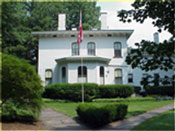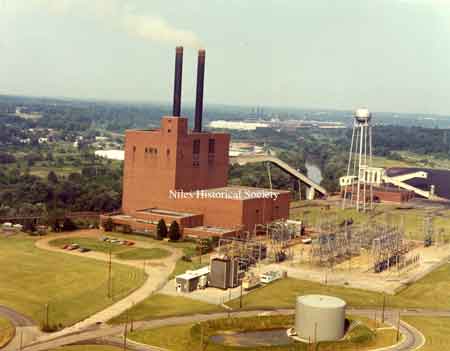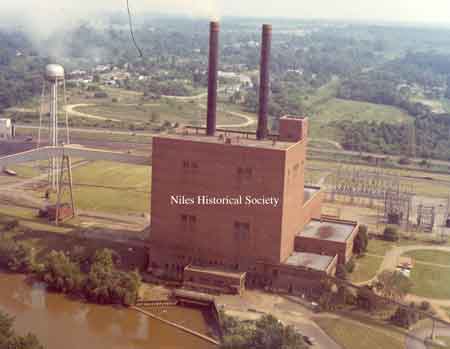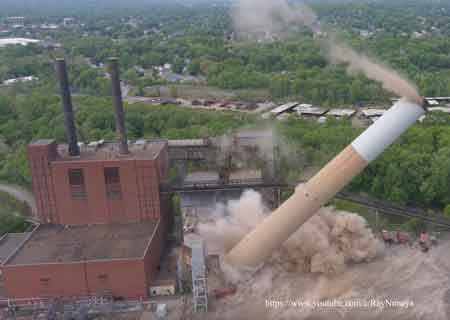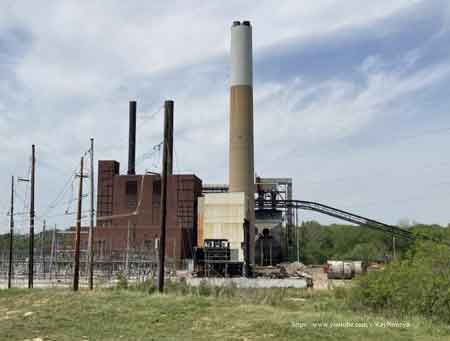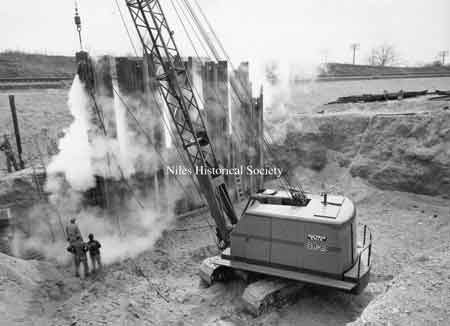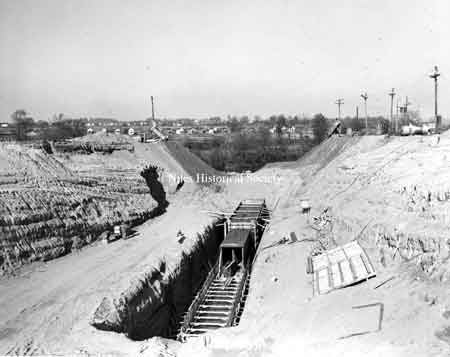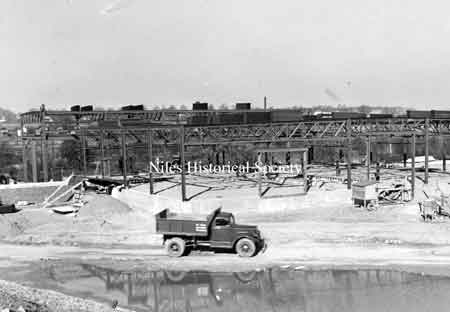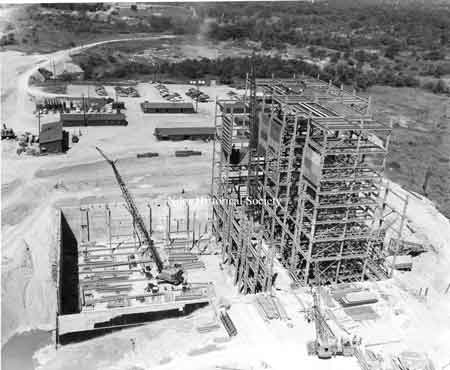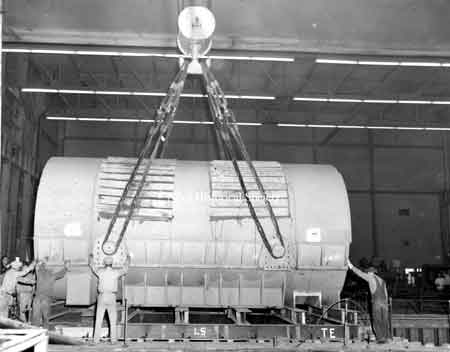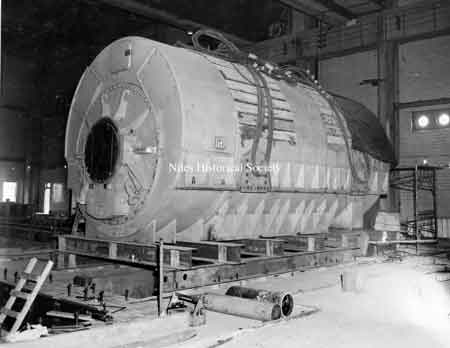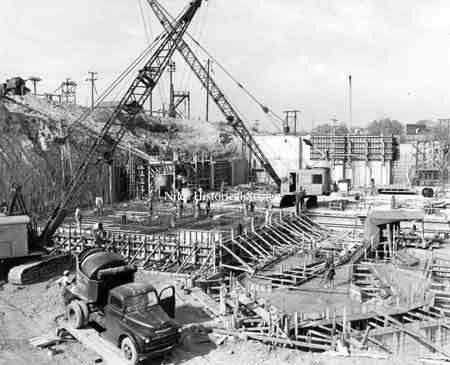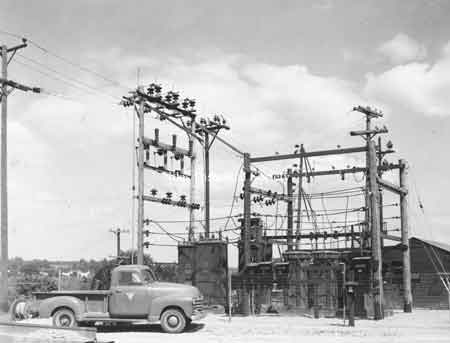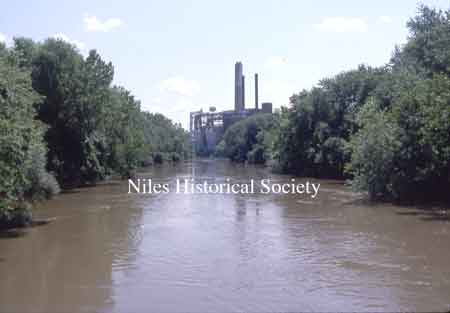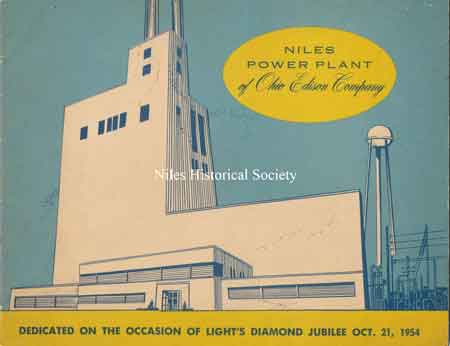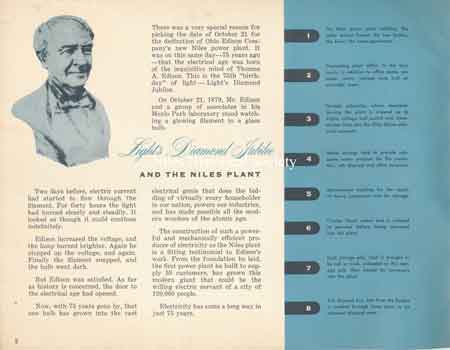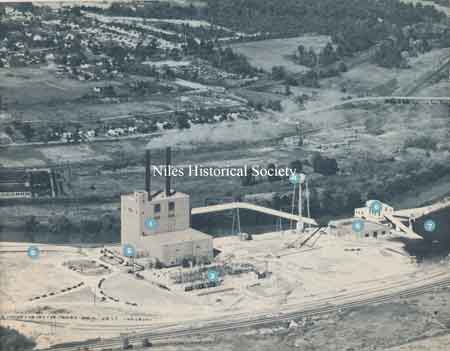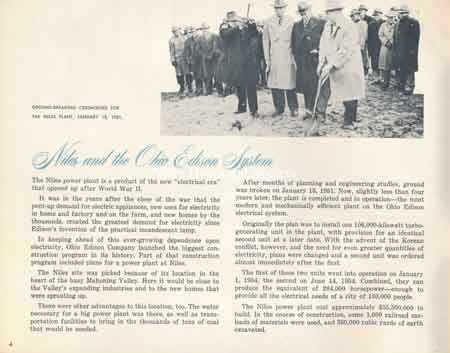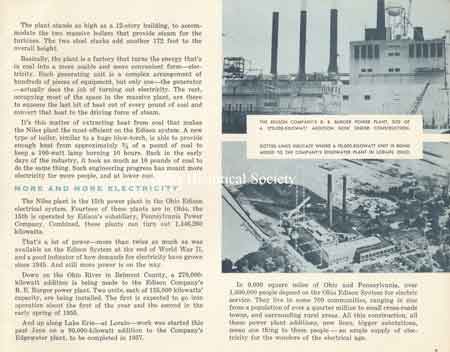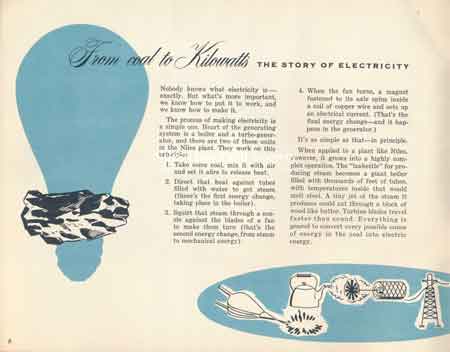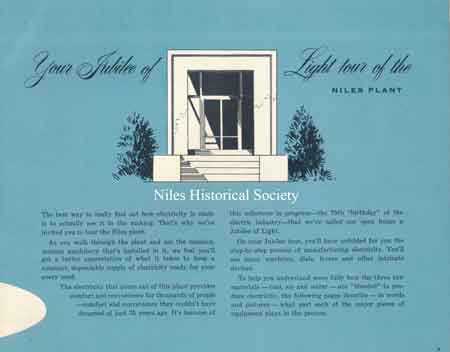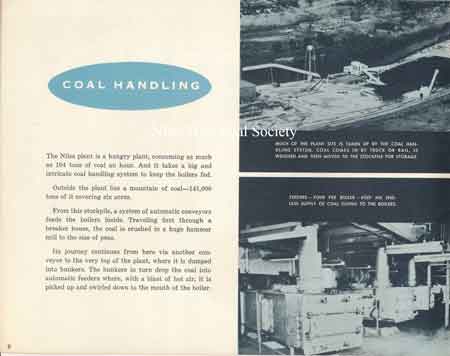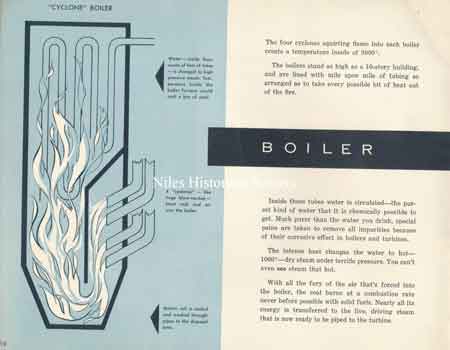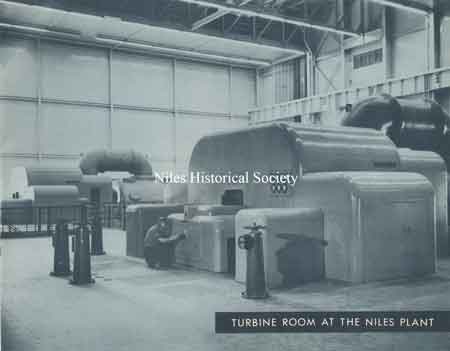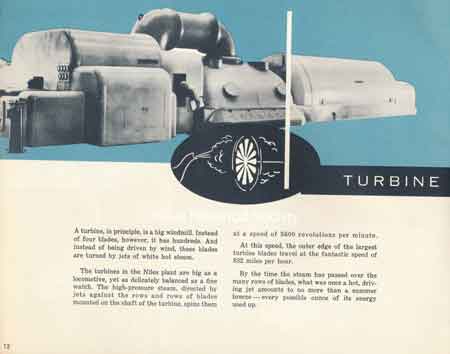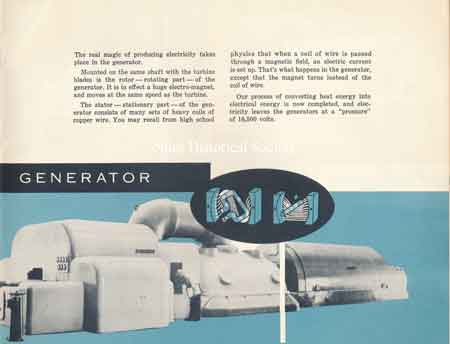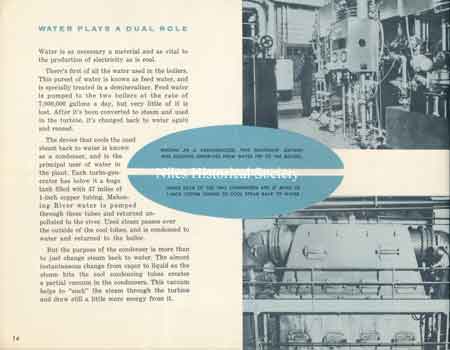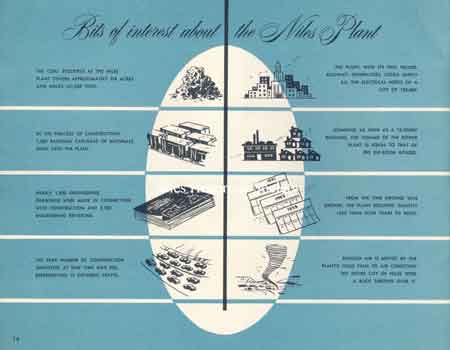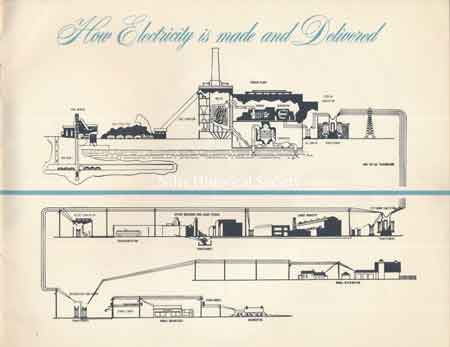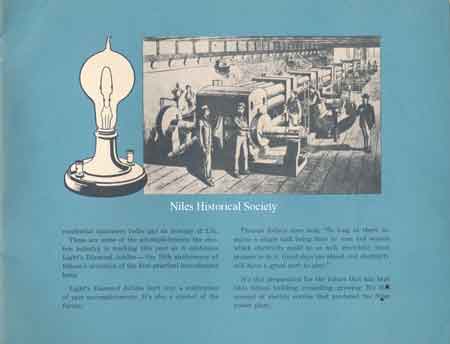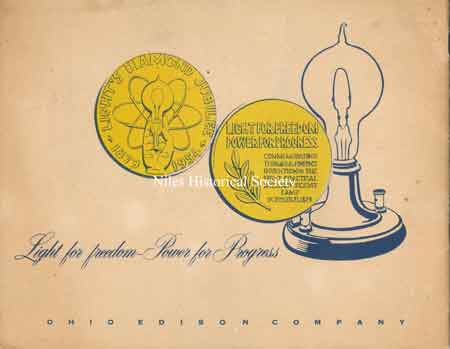Ward-Thomas Museum


Ohio Edison Plant
Ward — Thomas
Museum
Home of the Niles Historical Society
503 Brown Street Niles, Ohio 44446
Click on any photograph to view a larger image.
News
Tours
Individual Membership: $20.00
Family Membership: $30.00
Patron Membership: $50.00
Business Membership: $100.00
Lifetime Membership: $500.00
Corporate Membership:
Call 330.544.2143
Do you love the history of Niles, Ohio and want to preserve that history and memories of events for future generations?
As a 501(c)3 non-profit organization, your donation is tax deductible. When you click on the Donate Button, you will be taken to a secure Website where your donation will entered and a receipt generated.
|
West view of Ohio Edison Power Plant. PO1.610 North view of Ohio Edison Power Plant. PO1.1744 S11.1491 The demolition of the Niles plant, including the two 300 foot stacks and the 400 foot stack occurred in April 2022. |
Ohio
Edison Plant. Today's daily headlines tell of advances in gas, oil and even solar energy. But in 1953 the big news in Niles was the new Ohio Edison Power Plant to be constructed south of town on the banks of the Mahoning River which would be fired by coal. This was to be the biggest construction project in the area in many years. Niles was chosen as the site by Ohio Edison for this plant due to the availability of water from the river and the proximity of railroads for delivering the vast amounts of coal that would be needed for the generators. Nearby residential, commercial and industrial growth also influenced the decision. Originally the plans were for a single 106,000 killowatt generating unit. However even before construction began at the over 100 acre site, Edison president Walter H. Sammis announced a second unit would be added thus doubling the output of the facility. He cited the Korean situation and the nation's rearmament program as reasons. This resulted in a 12 story structure and two 300 foot high stacks being built to accommodate the generators and boilers. The cost was over $35,000,000. What happened inside was a complex process. In order to produce the electricity, the coal had to be broken into 1/4 inch size pieces. Conveyors took the coal to the top of the plant and dumped it into bunkers which in turn took it through the automatic feeders where it was mixed with air and swirled in the cyclone boilers at 136 mph. and at temperatures of over 3000 degrees. The water turned to dry steam which drove the turbine blades and continued to the condensers underneath. There the river water cooled the steam and condensed it back to water to be returned to the boilers. The generator acted as an electro-magnet producing the electricity. The electricity that was produced went to the substation outside the plant where transformers increased the voltage and made it ready to be delivered to the surrounding communities.The first boiler was fired on December 19, 1953. The headlines of the Niles Daily Times read "Ohio Edison Generator Switch Thrown Today". Each day 2500 tons of coal was used in operating the two generators while 200,000,000 gallons of water was pumped from the Mahoning River and cleanly returned to it. Over 900 men were employed in its construction. The new electric power plant was officially dedicated in October of 1954. Among others the speakers included Ohio Edison's Walter H. Simmis as toastmaster and Niles Mayor Edward P. Lenny. John T. Swartz officially dedicated the plant since he had met Thomas Edison himself several times. This event was scheduled to coincide with the celebration of the 75th anniversary of Edison's invention of the incandescent light bulb. To signify the advances in electricity the ceremony started being lit with only gas lights and replicas of Edison's first electric lamps. This evolved to an ending with brilliant floodlights illuminating the new plant. A three day open house of the facility followed with at least 15,000 touring this new industry in Niles. Now just as Edison's incandescent light bulb has been phased out in recent years in favor of more energy efficient types so has the the idea of electricity produced from coal. The Ohio Edison Power Plant no longer serves the community as it once did but its tall stacks still tower on the horizon as a reminder of its place in Niles history.
Ohio Edison Plant before demolition in April 2022. |
|
| |
||
| Pictures below show the construction of the Ohio Edison Power Plant located just off Belmont Avenue, south of the city. The plant has been closed and its future is unknown at this time. |
||
| |
||
|
View of plant from Mahoning River. |
||
| |
||
| Bits of Interest
About the Niles Plant. The coal stockpile at the Niles plant covers six acres and holds 141,000 tons. In the process of construction, 1,000 railroad carloads of materials went into the plant. Nearly 1,500 engineering drawings were made in connection with construction and 2,700 engineering revisions. The peak number of construction employees was 903, representing 13 different crafts. The plant, with its two 106,000 kilowatt generators, could supply all the electrical needs of a city of 130,000. Standing as high as a 12-story building, the volume of the power plant is equal to that of 563 six-room houses. From the time ground was broken, the plant required slightly less than four years to build. Enough air is moved by the plant’s huge fans to air condition the entire city of Niles were a roof thrown over it. |
||
The story behind these aerial photographs. My Grandfather, Leonard Scott Mentzer, worked for Ohio Edison Years ago. He was also a photographer and used to fly with John Kerner out of Petersburg airport and take photographs of the area. I found these slides and googled to find the building and found your site. Bill Mentzer |
||
| |
||
